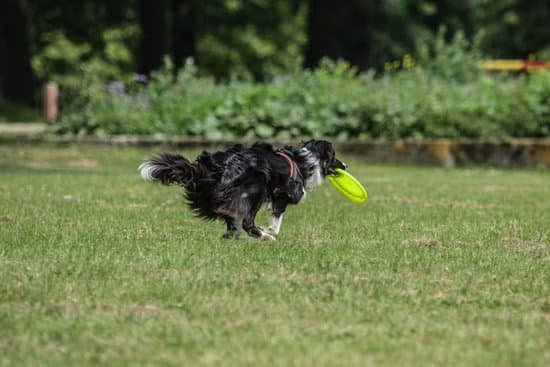Are you tired of your dog’s constant barking during walks? In this article, we will explore how to train a dog to stop barking on walks, focusing on positive reinforcement training methods and pre-walk preparations. We’ll also discuss the importance of understanding the root cause of barking and provide tips for dealing with specific scenarios that trigger your dog’s barking.
Barking during walks can be frustrating for both dog owners and passersby. Understanding why dogs bark during walks is crucial in addressing this behavior. By identifying the specific triggers for your own dog, you can implement effective training methods to curb their barking and make your walks more enjoyable.
Positive reinforcement training methods, such as using treats, praise, and clicker training, have been proven effective in modifying a dog’s behavior. We’ll delve into these techniques and provide insights on how to apply them when training your dog to stop barking on walks. Additionally, we’ll cover the significance of pre-walk preparations, including ensuring that your dog has sufficient exercise and mental stimulation beforehand to reduce the likelihood of barking.
Positive Reinforcement Training Methods
When it comes to training a dog to stop barking on walks, positive reinforcement methods can be highly effective in addressing this behavior. Positive reinforcement involves rewarding the dog for exhibiting the desired behavior, in this case, staying quiet during walks, with treats, praise, or clicker training. Here are some key points to consider when using positive reinforcement training methods:
- Consistency is key: It’s important to consistently reward the dog for being quiet during walks. This means that every time the dog refrains from barking at a trigger, such as another dog or passerby, they should receive a reward.
- Use high-value treats: When using treats as a form of positive reinforcement, it’s helpful to use high-value treats that your dog finds especially enticing. This could be small pieces of cooked chicken, cheese, or commercial dog treats.
- Pair praise with rewards: In addition to providing treats, verbal praise and petting can also serve as forms of positive reinforcement. Pairing praise with rewards can further reinforce the idea that being quiet on walks is a desirable behavior.
- Introduce clicker training: Clicker training is a method that uses a handheld clicker device to mark the moment when a dog exhibits the desired behavior. The sound of the click is then followed by a treat or other form of positive reinforcement. This technique can be particularly effective in shaping your dog’s behavior during walks.
By utilizing these positive reinforcement methods, dog owners can effectively communicate to their pets which behaviors are desirable and increase the likelihood of their dogs staying calm and quiet during walks. It’s essential to remember that patience and consistency are crucial components of successful positive reinforcement training. With time and dedication, most dogs can learn to control their barking impulses while out for a walk.
Pre-Walk Preparations
Before taking your dog for a walk, it’s important to ensure that they are adequately exercised both physically and mentally. A tired dog is less likely to exhibit excessive barking behavior during walks. Engaging in activities such as playing fetch, obedience training, or puzzle toys can help in tiring out your dog and keeping their mind stimulated before the walk.
In addition to physical exercise, mental stimulation is crucial for preventing boredom and reducing the likelihood of barking on walks. This can be achieved through interactive toys, food puzzles, or training sessions that challenge your dog’s cognitive abilities. Mental stimulation not only keeps your dog engaged but also contributes to their overall well-being.
It’s also essential to pay attention to your dog’s bathroom needs before heading out for a walk. Ensuring that your dog has had an opportunity to relieve themselves prior to the walk can help minimize distractions and focus their attention on the environment around them rather than feeling the urge to bark due to physical discomfort.
| Pre-Walk Preparation Tips | Importance |
|---|---|
| Physical Exercise | Reduces excess energy and prevents boredom |
| Mental Stimulation | Engages cognitive abilities and promotes well-being |
| Bathroom Break | Minimizes distractions and physical discomfort |
Leash and Walking Technique
Taking a proactive approach to the behavior of a barking dog during walks involves understanding the significance of proper leash handling and walking techniques. When a dog exhibits excessive barking while on a walk, it can often be attributed to a lack of control and discipline, resulting in frustration for both the dog and the owner. Implementing effective leash and walking techniques can greatly contribute to diminishing this behavior and fostering a more enjoyable walking experience.
Importance of Proper Leash Handling
The way in which a dog is leashed up and handled during walks has a substantial impact on their overall behavior. It’s essential to use an appropriate leash that provides you with adequate control over your dog without causing discomfort or restriction. For larger dogs or those prone to pulling, a sturdy harness or head halter may be beneficial in minimizing their ability to lunge forward and bark at passing stimuli.
Walking Technique for Preventing Barking
Teaching your dog to walk calmly and attentively begins with establishing yourself as the leader of the pack. By maintaining proper posture, setting the pace, and providing clear direction, you can instill in your dog the understanding that you are in control of the walk. It’s important to avoid allowing your dog to pull on the leash or lead the way, as doing so reinforces unruly behavior.
In addition to asserting your leadership position, incorporating training exercises into your walks can aid in curbing excessive barking. Implementing obedience commands such as “heel” or “leave it” during moments when your dog is tempted to bark can redirect their focus and encourage them to follow your lead. Consistent practice of these techniques will help your dog learn to remain calm while walking and resist the urge to bark at various triggers they encounter along the way.
Desensitization and Counter-Conditioning
Understanding Desensitization
Desensitization involves gradually exposing the dog to the trigger that elicits barking in a controlled and positive way. By starting at a distance where the dog remains calm and then progressively decreasing the distance while ensuring the dog’s relaxation, you can help the dog become desensitized to the trigger. This method requires patience and consistency, but over time, it can lead to a reduction in the dog’s reactivity.
Implementing Counter-Conditioning
Counter-conditioning involves changing the dog’s emotional response to the trigger from a negative one (barking) to a positive one (calmness). This is often achieved by pairing the presence of the trigger with something enjoyable for the dog, such as treats or playtime.
For example, if encountering other dogs triggers barking in your dog, you can give your dog treats or engage them in play whenever another dog comes into view. Eventually, this positive association can help reduce barking behavior.
Combining Desensitization and Counter-Conditioning
In many cases, desensitization and counter-conditioning are used together to effectively address a dog’s reactivity. By systematically exposing the dog to triggers at a manageable level while also providing positive reinforcement, these methods work in tandem to change the dog’s behavioral response. When implemented properly and consistently, desensitization and counter-conditioning can significantly decrease a dog’s tendency to bark during walks.
Distraction and Redirection Techniques
When it comes to training a dog to stop barking on walks, distraction and redirection techniques can be incredibly effective in shifting their focus away from potential triggers. These strategies can help break the cycle of barking and redirect their attention to more positive and calm behaviors. Here are some specific techniques for distracting and redirecting a barking dog’s attention:
- Interactive Games: Engaging your dog in interactive games can be a fun way to divert their attention from potential triggers. Activities such as fetch, tug-of-war, or hide-and-seek can channel their energy in a positive direction and reduce the likelihood of barking.
- Toys: Providing your dog with a favorite toy can serve as a distraction during walks. Interactive toys that dispense treats or require mental stimulation can keep them focused and occupied, minimizing the urge to bark at passing stimuli.
- Alternative Commands: Teaching your dog alternative commands, such as “sit” or “watch me,” can be used to redirect their attention when they start barking. By offering a different instruction, you can steer their behavior in a more desirable direction.
By incorporating these distraction and redirection techniques into your training routine, you can help your dog develop self-control and focus while out for walks. It’s important to remain patient and consistent with these methods, as it may take time for your dog to learn new behaviors and responses to potential triggers. With dedication and perseverance, you can effectively train your dog to stop barking on walks using these positive reinforcement techniques.
Dealing With Specific Scenarios
When encountering other dogs during walks, it is common for a dog to bark out of excitement, fear, or territorial instincts. To address this scenario, one effective training tip is to teach the dog to focus on their owner by using positive reinforcement techniques.
This can be achieved by providing treats and praise when the dog remains calm and attentive while in the presence of other dogs. Gradually increasing the distance between other dogs and utilizing a “watch me” command can also help redirect the dog’s attention away from potential triggers.
Similarly, encountering people during walks may also trigger barking behavior in some dogs. Whether it’s due to overexcitement or anxiety, desensitization and counter-conditioning can be beneficial in addressing this scenario.
By exposing the dog to different individuals in controlled settings and rewarding calm behavior with treats and praise, they can learn to associate human encounters with positive experiences. Additionally, maintaining a loose leash and practicing proper walking techniques can contribute to preventing barking episodes when coming across unfamiliar persons.
Another common scenario where dogs tend to bark on walks is when faced with unfamiliar objects or stimuli such as bicycles, scooters, or loud noises. In these situations, distraction and redirection techniques can effectively manage the dog’s response.
Utilizing interactive games or toys as a means of redirection can help shift their focus away from the triggers while encouraging calm behavior. Similarly, introducing alternative commands that prompt the dog to engage in specific behaviors rather than barking can aid in guiding their reactions towards more desirable responses.
By implementing these tailored training tips for common walking scenarios such as encountering other dogs, people, unfamiliar objects or stimuli – pet owners are better equipped to manage their dog’s barking behavior effectively and create more enjoyable walk experiences for both themselves and their furry companions.
| Walking Scenario | Training Tip |
|---|---|
| Encountering other dogs | Teach focus on owner using positive reinforcement techniques |
| Encountering people | Desensitization & Counter-Conditioning; Practice proper leash handling |
| Unfamiliar objects/stimuli | Distraction & Redirection Techniques; introducing alternative commands |
Consistency and Patience
Training a dog to stop barking on walks requires consistency and patience from the dog owner. It’s important to understand that changing a behavior takes time, and it won’t happen overnight. Consistency in training means using the same cues, rewards, and techniques every time you go for a walk. This helps the dog understand what is expected of them and reinforces the desired behavior.
In addition to consistency, patience is also crucial in this process. Some dogs may take longer to learn than others, and it’s important not to get frustrated or give up too soon. Each dog is unique, so it’s essential to be patient and understanding as they progress through their training. Remember that building new habits takes time, so stay calm during the training process, even when faced with challenges.
To stay persistent and resilient throughout the training process, it’s important for dog owners to remain committed to the goal of teaching their dog to stop barking on walks. This may require adjusting techniques or seeking additional resources if progress is slow. Keep in mind that setbacks are normal in any training regimen, so staying resilient means being able to adapt to new challenges while remaining focused on the end goal of having a well-behaved companion on walks.
Seeking Professional Help
In conclusion, training a dog to stop barking on walks requires patience, consistency, and a deep understanding of the root cause of their behavior. By using positive reinforcement training methods, preparing for walks effectively, and employing desensitization and redirection techniques, pet owners can make great strides in reducing their dog’s barking. However, some dogs may require additional support from a certified dog trainer or behaviorist if progress is not being made.
When despite your best efforts, your dog continues to exhibit excessive barking during walks, it may be time to seek professional help. A certified dog trainer or behaviorist has the expertise and experience to assess your dog’s individual triggers and design a customized training plan to address the underlying issues causing the barking.
They can provide valuable insights and techniques that are tailored to your specific situation, helping you overcome any obstacles you may be facing in your training efforts.
It’s important to recognize when seeking professional assistance is necessary rather than continuing to struggle with ineffective methods. By reaching out to a certified professional, you can gain the knowledge and guidance needed to successfully train your dog to stop barking on walks, ultimately leading to more enjoyable outings for both you and your furry companion.
Remember that every dog is unique, and what works for one may not work for another – seeking expert help demonstrates your commitment to ensuring the well-being of your pet and strengthening the bond between you.
Frequently Asked Questions
How Do I Get My Dog to Stop Barking at Everything on Walks?
One way to get your dog to stop barking at everything on walks is to address the underlying reason for the behavior. It’s important to ensure that your dog is getting enough physical and mental exercise, as a tired and stimulated dog is less likely to bark excessively.
Additionally, using positive reinforcement training techniques can help teach your dog an alternative behavior, such as sitting quietly or focusing on you, when they encounter something that triggers their barking.
What Is the Best Command to Stop a Dog From Barking?
The “quiet” command can be effective in stopping a dog from barking. This command teaches the dog to stop barking on cue and can be reinforced with positive rewards when they comply.
It’s important to be consistent in using the command and rewarding the desired behavior, as well as using it in different situations where the dog tends to bark excessively.
How Do You Discipline a Dog to Stop Barking?
Discipline should focus on teaching the dog what behaviors are acceptable rather than punishing them for barking. Positive reinforcement training methods, such as rewarding quiet behavior and redirecting their attention, tend to be more effective in addressing excessive barking than punitive measures.
Consistency, patience, and understanding the reasons behind the barking are key components of effectively disciplining a dog to stop barking.

Welcome to the blog! I am a professional dog trainer and have been working with dogs for many years. In this blog, I will be discussing various topics related to dog training, including tips, tricks, and advice. I hope you find this information helpful and informative. Thanks for reading!





